Why Labyrinth is so memorable
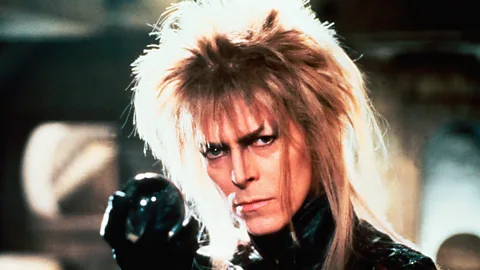 Rex Features
Rex FeaturesThe cult children’s classic celebrates its 30th anniversary this year. Luke Buckmaster explains why it is still so beloved – and it’s not just David Bowie’s codpiece.
Jim Henson’s beloved 1986 movie musical Labyrinth, one of only two non-Muppets films the legendary puppeteer directed, is famous for several reasons.
Fans of David Bowie will recall visions of the late musician wearing extremely tight tros that fail to obscure an enormously large codpiece. Bowie wrote and performed all the songs, including the iconic Dance Magic Dance. He plays a nefarious, all-singing, all-dancing king of a fantasy world of goblins, castles and all manner of strange colourful creatures.
One of Labyrinth’s best-known scenes is a sensational finale that takes place on a set modelled on Escher staircases. It is also the production that brought a then-unknown, then-15-year-old Jennifer Connelly to the public’s attention.
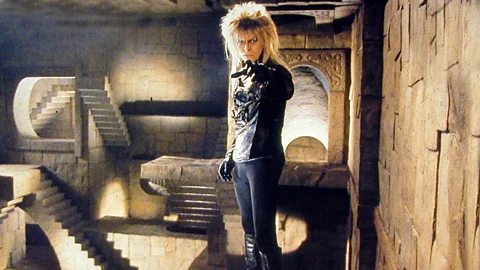 Alamy
AlamyBut undoubtedly the most memorable parts of the film, which celebrates its 30th anniversary this year with a return to cinemas and a new Blu-ray edition, are the many extraordinary creatures designed and operated by Henson and his team.
Like 1982’s The Dark Crystal, the other non-Muppets movie directed by Henson (who co-directed it with Frank Oz) the technology used was at the forefront of animatronics. The film-makers pushed the capabilities of radio-controlled puppetry, in a decade that was arguably the greatest period in history for cinema puppets.
Although computer-generated images have been used in film since the 1970s, it wasn’t until the ‘90s – following the success of game-changing releases such as Terminator 2: Judgement Day and Jurassic Park – that Hollywood truly embraced CGI. With the inundation of computer effects came a growing reduction in “real” on-set physical elements, such as puppets.
The babe with the power
The wonderful handmade aesthetic of Labyrinth is the main reason the film has dated so well. Three decades later it still looks breathtaking; one of those viewing experiences that regularly provokes the question “how did they do that?”
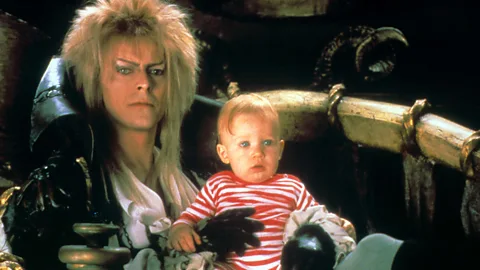 Rex Features
Rex FeaturesThe plot revolves around Sarah (Connelly), who is upset that she is being forced to stay home and babysit her baby brother. When she wishes goblins will come and take him away her wish is granted, the Goblin King (Bowie) snatches the baby, holding him captive in his castle. He gives Sarah 13 hours to solve the labyrinth before her sibling is turned into a goblin.
One of the first creatures she encounters in the Goblin King's fantastical world is a dwarf named Hoggle: a morally dubious, Sméagol-esque character whose motives and allegiances are unclear. With a huge lumpy nose, spurts of shoulder-length white hair and a crinkled, finely detailed face, Hoggle is an amazing puppet, at once both magical and realistic.
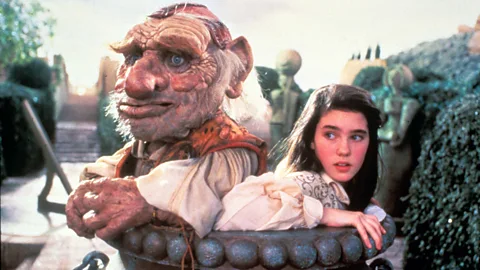 Rex Features
Rex FeaturesHis seemingly effortless facial and body movements required the collaboration of six people working in real time. The character’s large face contained 18 motors, which were manipulated off-frame by four crew using remote controls. Diminutive actor Shari Weiser controlled Hoggle's body and Brian Henson, Jim’s son, provided his voice.
Henson’s fixation on tangible things – things you could literally reach out and touch – extended further than just the puppets. One time when Sarah, in a down-the-rabbit-hole moment, takes a tumble she falls into the so-called Shaft of Hands, an eerily surreal tunnel that looks like something out of a Guillermo del Toro film.
 Henson Associates
Henson AssociatesThe shaft is comprised of real human hands, which come out of the walls to form the shape of human faces. To achieve this the crew wore green foam latex gloves, hid behind scaffolding and performed extensively rehearsed hand movements. The effect is startling. Writer Dennis Lee once described it as “one of those magic moments”, where the quality of the effect actually improved on the vision in his imagination.
The creatures in Labyrinth vary substantially in size, from a small cheeky worm (replete with miniature red scarf and tufts of blue hair) to a huge, hairy, horn-clad gentle giant the size of several people. This is Ludo, Sarah's sidekick of sorts, who also attended the film’s premiere and met a very confused looking Princess Diana.
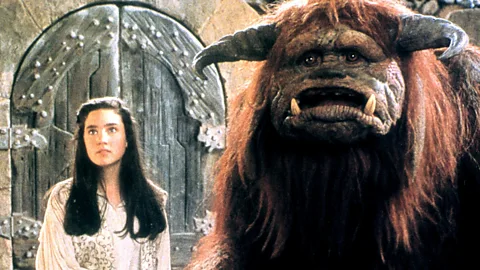 Alamy
AlamyThe largest puppet in the film was 15ft (4.57m) high, the biggest Henson had ever built. Appropriately named Humongous, this hydraulics-operated creature is a robot that guards the entrance to the Goblin City. It looks shiny and hard, as if it were constructed using sheets of metal. It was actually built out of foam and made to look reflective.
Creature comforts
The innovators who worked on these effects belonged to visual effects company Jim Henson’s Creature Shop, which was founded in 1979. Even though Hollywood moved enthusiastically into the space of digital trickery, and thus the construction of elaborate puppets became scarcer, the workshop has continued to have a significant presence in the film and TV industry.
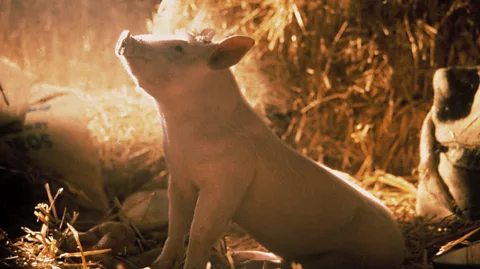 Alamy
AlamyIn the mid ‘90s it built animatronic animals for the Australian family film Babe, earning the company an Academy Award for Best Visual Effects. It provided prosthetics for another Oscar-winning film, 1996’s The English Patient, as well as a litany of masks, objects and character elements for countless productions over the years.
The Creature Shop’s output now largely involves bringing small touches to specific scenes. In recent years this includes supplying animatronic tigers for The Darjeeling Limited (2007) and The Hangover (2009), and stand-in puppets for the new The Jungle Book adaption. These puppets were used so the lead actor, Neel Sethi, had actual characters to engage with on-set, and were edited out in post-production.
The company has also developed technology for digital environments, but, in typical Henson fashion, with a hands-on twist. An offshoot of the company, the Henson Digital Puppetry Studio, creates 3D-animated characters controlled by hand using dozens of buttons and levers.
These characters can be operated in real time, including both body and facial movements, allowing a spontaneity that cannot be achieved using traditional (known as ‘keyframe’) computer animation. The technology is used most commonly in children’s television programs, where budgets are lower and the turnaround time is faster.
 Alamy
AlamyFor the production of director Spike Jonze’s 2009 adaptation of children’s book Where the Wild Things Are, the Creature Shop was given a rare opportunity to create the kind of handmade visual effects not unlike those they produced in the ‘80s. The huge, furry, poignant-looking faces of the gentle giants in this film, about a child who visits a fantasy world that exists in his imagination, bear some resemblance to that big lovable lug Ludo.
He, along with Hoggle, Humongous and David Bowie's codpiece, will return to cinemas this year, when the 30th anniversary screenings of Labyrinth commence. But in a sense they never left. While the film was a commercial disappointment when it was first released, it has for decades remained a popular title on the bill at repertory cinemas around the world.
If you would like to comment on this story or anything else you have seen on BBC Culture, head over to our Facebook page or message us on Twitter.
And if you liked this story, sign up for the weekly bbc.com features newsletter, called “If You Only Read 6 Things This Week”. A handpicked selection of stories from BBC Future, Earth, Culture, Capital, Travel and Autos, delivered to your inbox every Friday.
